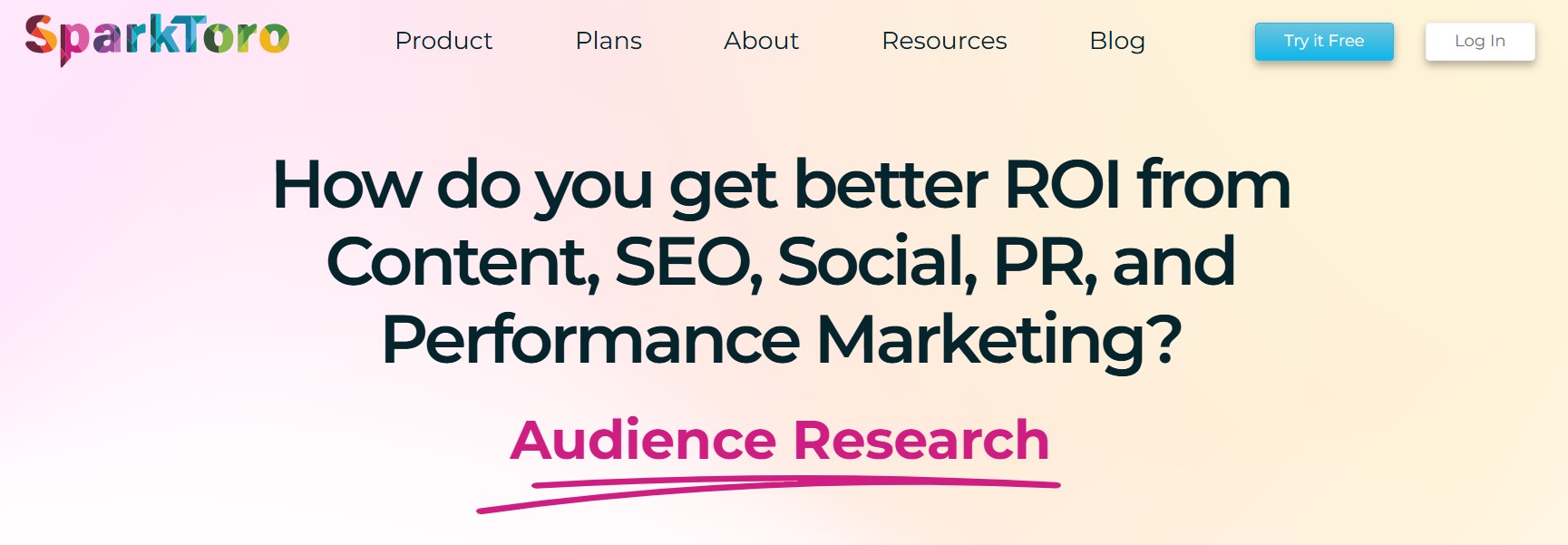Prepare Your Q4 Marketing Plan with These AI Tools
The last quarter of the year is the most decisive period for businesses. From October through December, consumer activity spikes sharply, driven by major holidays and the urgency of year-end budgets.
In fact, Q4 accounted for approximately 33% of annual consumer spending in 2024, with orders rising 37% between the first and second halves of the year. To succeed in this crowded and fast-moving period, you need a marketing plan that’s data-driven, personalized, and adaptable. AI tools help you analyze past performance, uncover fresh opportunities, scale your campaigns, and pivot quickly when customer behavior shifts.
Step 1: Identify Your Marketing Goals and Objectives
The first step to preparing a strong Q4 strategy is to look back at what you’ve already done this year. Review your campaigns from January to September. Which channels drove the most traffic? Which products or services performed well? Where did you see drop-offs?
Many businesses rush into holiday promotions without reflecting on what worked earlier. But analyzing your past performance helps you avoid repeating mistakes and ensures you double down on proven strategies. To do this, you need a clear picture of customer behavior, traffic sources, and conversions. Your Q4 marketing goals should answer key questions:
1. Do I want to reach new customers, existing customers, or both?
Some businesses focus on retention during Q4 by engaging past buyers with promotions. Others expand their reach through paid ads and partnerships. Many choose a mix of both for balance.
2. How do customers find my business?
Look at how people discovered you in the past. Was it organic search, social media, paid ads, or referrals? Use this as a guide to allocate Q4 resources.
3. What are my customers’ pain points?
For example, if your audience values quick delivery before Christmas, highlight shipping deadlines. If affordability is their priority, highlight discounts.
4. What makes my business unique?
Define your competitive edge. Do you offer faster service, eco-friendly packaging, or better quality? Showcase this in all Q4 messaging.
5. What is my brand identity?
Your messaging must stay consistent. Define your tone, visuals, and core values now, and stick to them across all campaigns.

Step 2: Understand Your Audience’s Seasonal Behavior
Q4 isn’t just another quarter. Consumer behavior shifts dramatically during this period. People shop earlier for Christmas, budgets change as the year closes, and cultural events vary by region. Understanding your audience’s seasonal mindset is crucial to crafting relevant campaigns. For example:
- In the U.S., Black Friday and Cyber Monday dominate November.
- In Europe, Christmas markets and year-end holidays drive traffic.
- In Asia, events like Singles’ Day (11/11) are critical sales moments.
SparkToro: Best for Audience Research
Understanding your audience goes beyond demographics. You need to know where they spend time online, what content they consume, and who influences their decisions. That’s where SparkToro comes in. The platform reveals which podcasts your audience listens to, which YouTube channels they follow, which websites they visit, and even which hashtags they engage with. Instead of guessing where to focus, SparkToro gives you a clear map of your audience’s digital behavior, making targeting far more precise.

Core Capabilities
1. Audience Interests Mapping
Input a keyword or social handle, and SparkToro shows what your audience is reading, watching, and discussing. This helps you align Q4 messaging with seasonal topics they already care about.
2. Influencer Identification
Not every influencer is relevant to your brand. SparkToro identifies the ones your target audience actually engages with, making collaborations during holiday campaigns more impactful.
3. Demographic Breakdown
You’ll see where your customers are located, what jobs they do, and what platforms they use. This matters because seasonality differs by location, a winter clothing campaign won’t resonate the same way in Florida as it will in New York.
Step 3: Review Past Performance and Market Trends
To make Q4 campaigns effective, you must learn from what’s already happened this year. Reviewing past performance highlights what worked, what didn’t, and how external factors influenced results. For example, if summer promotions brought strong engagement but weak conversions, your Q4 plan should address that gap.
Seasonality also matters. Weather shifts, holiday traditions, and year-end buying cycles all influence customer behavior. A fitness brand might focus on "holiday survival workouts” in November, then pivot to "new year transformations” in December.
For analyzing these patterns, you can use the following tool.
Google Analytics 4: Best for Performance Insights
Tracking user interactions across websites and apps can be complicated, but having a unified view of performance is critical for Q4 planning. Google Analytics 4 provides exactly that. It helps you see how customers move through your site, which channels drive conversions, and where people drop off. With cross-platform tracking and predictive insights, GA4 allows marketers to refine campaigns, allocate budgets effectively, and make data-backed decisions that drive results.
Main Functions
1. Customer Journey Tracking
GA4 shows how customers move from first touchpoint to purchase, letting you identify where drop-offs occur.
2. Predictive Metrics
The system uses machine learning to forecast churn probability and purchase likelihood, helping you anticipate customer actions during Q4.
3. Audience Segmentation
Create detailed audience groups based on behavior. For example, you can target visitors who browsed gift guides but didn’t purchase.
Step 4: Create Personalized Campaign Messaging
In Q4, inboxes and social feeds are flooded with discounts, holiday sales, and last-minute offers. A generic "Holiday Sale!” won’t stand out when every competitor is shouting the same thing. To cut through the noise, your messaging needs to feel personal, tailored to customer behavior, purchase history, and seasonal context. For instance, repeat customers may respond better to loyalty rewards, while new customers may need stronger introductory offers.
Jasper: Best for Content Creation
Producing high-quality content consistently is one of the biggest challenges in Q4. Instead of staring at a blank screen, marketers can turn to Jasper, an AI writing assistant built for speed and quality. Jasper generates marketing copy for emails, ads, blogs, and landing pages with just a few prompts. It adapts tone and messaging for different campaigns, ensures consistency across platforms, and offers ready-to-use templates for seasonal promotions. The result is faster campaign preparation and more time to focus on refining strategy.
Key Features
1. Tone Adjustment
You can adjust messaging based on seasonal context. For Christmas campaigns, Jasper helps create warm and festive tones, while for Black Friday, it generates language focused on urgency and scarcity.
2. Multichannel Copy Generation
Instead of rewriting content for every platform, Jasper adapts messages for email, social, and web campaigns, ensuring consistent yet channel-optimized messaging.
3. Campaign Templates
Jasper comes with ready-to-use templates for promotions, re-engagement, and launches. These save time in Q4 when speed is crucial.
Step 5: Optimize Ad Spend and Targeting
Ad competition peaks in Q4, which drives up cost-per-click and impression rates. Brands that fail to monitor campaigns risk burning through budgets without returns. Instead of manually tweaking bids and audiences, you need automated optimization that adapts in real time. This is where autonomous campaign management platforms step in. You can use this tool to do so.
Albert AI: Best for Campaign Optimization
Running paid ads during Q4 can quickly drain budgets if not managed carefully. Albert AI changes the equation by not just analyzing campaigns but actively running and optimizing them. The platform tests different creatives, audiences, and placements in real time, reallocating spend toward what performs best. It works across search, social, and display, ensuring campaigns adapt instantly to shifting consumer trends. This autonomous optimization helps brands maximize their ad spend during the most competitive months of the year.
Primary Functions
1. Autonomous Optimization
Albert continuously tests different creatives, audiences, and placements, shifting budget toward what performs best without waiting for human intervention.
2. Cross-channel Management
Rather than juggling Google Ads, Facebook Ads, and display platforms separately, Albert manages them as a unified campaign for consistent messaging.
3. Real-time Adaptation
If competitor promotions cause sudden shifts in audience behavior, Albert adjusts targeting and spend instantly to keep campaigns competitive.
Step 6: Deliver Seasonal Email Campaigns
Email is one of the most profitable Q4 channels, but blasting the same discount to every subscriber won’t maximize results. Relevance is key. Emails should reflect customer behavior, seasonal context, and urgency, like shipping deadlines. Automated segmentation and triggers make this possible.
Klaviyo: Best for Email Marketing Automation
Email remains one of the most profitable Q4 channels, but it requires precision. Klaviyo specializes in creating personalized, data-driven email and SMS campaigns. It uses behavioral triggers to send the right message at the right time, whether it’s an abandoned cart reminder, a seasonal offer, or a loyalty reward. With predictive analytics and ready-to-use holiday templates, Klaviyo makes it easy to keep your campaigns timely, relevant, and revenue-focused throughout the holiday rush.
Standout Features
1. Behavioral Triggers
Emails are sent automatically when customers abandon carts, browse certain products, or reach milestones like a one-year anniversary.
2. Seasonal Templates
The platform includes pre-designed holiday templates that can be customized quickly, allowing teams to launch campaigns faster during busy months.
3. Predictive Analytics
Klaviyo forecasts purchase likelihood, helping marketers prioritize high-value customers with targeted offers.
Step 7: Manage Social Media Engagement
Social media activity spikes during Q4 as customers look for deals, inspiration, and gift ideas. Brands that stay active across platforms see higher engagement, but manually creating enough posts can drain creative resources. Repurposing long-form content into multiple formats helps maintain visibility without overloading teams.
LatelyAI: Best for Social Media Content Repurposing
Maintaining a strong presence on multiple platforms during Q4 can overwhelm even large teams. LatelyAI solves this by transforming long-form content, blogs, podcasts, videos into dozens of short, platform-ready posts. Its AI analyzes engagement data to identify which language and styles resonate most with your audience, refining future posts automatically. This allows your brand to stay active and engaging without stretching creative resources thin.
Top Capabilities
1. AI-generated Social Posts
Upload a blog, video, or podcast, and LatelyAI automatically generates snippets optimized for Twitter, LinkedIn, Instagram, and Facebook.
2. Engagement Insights
The platform tracks which styles and phrases resonate most with audiences, using those insights to refine future posts.
3. Team Collaboration
Teams can coordinate and approve assets within the tool, ensuring messaging stays consistent across all channels.
Step 8: Monitor Trends and Adjust Quickly
Q4 moves at a faster pace than any other quarter. A trend can explode in days whether it’s a viral TikTok product or a competitor’s new discount strategy. If you don’t spot these shifts early, you risk missing out on potential sales. Monitoring consumer conversations in real time is essential.
Brandwatch: Best for Social Listening
Consumer sentiment changes quickly during the holiday season, and spotting trends early can be the difference between leading and lagging behind. Brandwatch monitors conversations across social media, forums, blogs, and news to keep you in the loop. It detects rising topics before they peak, tracks competitor activity, and provides sentiment analysis on how people view your brand. These real-time insights allow marketers to pivot strategies and align campaigns with what customers are actually talking about.
Core Highlights
1. Trend Detection
Identify rising topics before they peak, such as holiday shopping hashtags or product buzz.
2. Competitor Analysis
Monitor competitor campaigns, pricing, and messaging to compare performance.
3. Sentiment Analysis
Measure whether your brand is being discussed positively or negatively, which is critical when stakes are high in Q4.
Step 9: Personalize On-site Experience
Driving traffic in Q4 is only half the battle. The real challenge is converting visitors once they land on your site. If the experience isn’t tailored, whether through relevant product recommendations, localized offers, or simplified navigation. Potential buyers will bounce to a competitor.
Optimizely: Best for Website Personalization
Your website is often the final stop before conversion, and in Q4, relevance is everything. Optimizely helps businesses test, personalize, and optimize site experiences. Through A/B testing, multivariate experiments, and AI-driven personalization, it tailors content and layouts to each visitor. Whether it’s highlighting region-specific offers or adjusting calls-to-action based on past browsing, Optimizely ensures every interaction feels targeted increasing the likelihood of conversion.
Essential Functions
1. A/B and Multivariate Testing
Experiment with different headlines, layouts, or CTAs to find the variations that increase conversions most effectively.
2. AI-driven Personalization
Content adapts dynamically based on visitor behavior, location, or purchase history.
3. Experimentation Workflow
Multiple experiments can run simultaneously, speeding up site optimization during the short Q4 window.
Step 10: Automate Customer Support
The holiday season brings a surge in questions about shipping deadlines, product availability, and return policies. If every inquiry requires a manual response, teams can quickly become overwhelmed, leading to frustrated customers and lost sales. Automating support ensures customers get instant answers, while human agents handle only complex issues.
Intercom: Best for AI-powered Customer Support
High traffic during Q4 also means a flood of customer questions about shipping, returns, and promotions. Intercom equips businesses with AI-powered chatbots, live chat, and automation to handle this surge. Resolution bots can instantly answer FAQs, while complex issues are routed to the right agent with full customer context. By combining automation with human support, Intercom ensures fast responses and positive customer experiences at the busiest time of year.
Primary Functions
1. Resolution Bots
Pre-programmed bots instantly answer common questions, from "Where’s my order?” to "What’s your return policy?”
2. Customer Routing
Complex questions are automatically routed to the right agent, reducing response times.
3. Data Integration
Intercom connects with CRMs and order systems so agents have full customer history when resolving tickets.
Step 11: Measure Results and Prepare Year-End Reports
The fourth quarter isn’t just about executing campaigns — it’s also about learning from them. Once the busy season ends, businesses need to pause and assess what worked, what underperformed, and what can be improved going into the new year. Without this step, you risk repeating the same mistakes or missing out on opportunities to double down on successful tactics.
Q4 is unique because it condenses an entire year’s worth of marketing intensity into just a few months. Black Friday, Cyber Monday, holiday promotions, and year-end clearances all generate a surge of data. That means more customer interactions, more ad spend, and more campaign touchpoints than any other quarter. Turning this flood of data into insights is critical — not just to justify budgets but also to set a stronger strategy for Q1.
This is where advanced analytics and reporting platforms become essential. Instead of manually combing through multiple dashboards, you need a solution that consolidates everything in one place and gives you clear visualizations of performance.
Tableau: Best for Data Visualization and Reporting
Raw marketing data from ads, CRMs, and analytics tools can be difficult to interpret. Tableau simplifies this by turning complex datasets into interactive dashboards and visual reports. Instead of scrolling through spreadsheets, marketers get a clear, actionable view of performance.
At the end of Q4, Tableau shows not just overall revenue, but which campaigns, audiences, and products delivered the strongest results. This makes it easier to present outcomes to stakeholders and build a sharper strategy for the year ahead.
Key Features
1. Interactive Dashboards
Instead of static reports, Tableau allows you to drill into the details. For example, you might start with a high-level view of total Q4 sales, then zoom into performance by campaign, channel, or region. This flexibility helps uncover patterns that a simple spreadsheet would miss.
2. Data Integration
One of Tableau’s strengths is its ability to connect with almost any data source. From Google Ads and Facebook Ads to Shopify and Salesforce, you can pull all your marketing and sales data into a single dashboard. This eliminates silos and gives you a complete view of performance across the quarter.
3. Custom Visualizations
Charts, heatmaps, funnels, and trend lines make it easy to spot what’s working. For instance, you can quickly identify whether your Cyber Monday campaigns outperformed your Black Friday campaigns or which customer segment delivered the highest lifetime value during Q4.
4. Collaboration and Sharing
Dashboards can be shared with teams and stakeholders, making reporting more transparent. Marketing, sales, and leadership teams can all access the same insights, ensuring alignment on results and next steps.
Final Thoughts
The final months of the year aren’t just about driving sales, they’re about building momentum that carries into the new year. By integrating AI into your Q4 plan, you give your team more time to think strategically while repetitive tasks run in the background. The real advantage comes from speed, accuracy, and adaptability qualities that matter most when the market is moving fast. Treat these months not only as an opportunity to meet short-term goals but also as a testing ground for smarter campaigns, sharper insights, and stronger customer relationships that extend well beyond the holiday season.





